|
Magic Lanterns, various manufacturers England part 2 |
|||
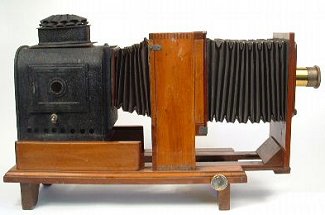 Mahogany, brass and tinplate
magic lantern/enlarger with a maker's
plate reading 'Pollock & Stewart, Opticians, 41 Renfield Street,
Glasgow'. Mahogany, brass and tinplate
magic lantern/enlarger with a maker's
plate reading 'Pollock & Stewart, Opticians, 41 Renfield Street,
Glasgow'.Starting from the front end it has a brass objective lens inscribed with 'Triple Achromatic Lens, J.H.Dallmeyer, London No. 5110', fitted with an amber filter, both set into a mahogany front plate connected by bellows to the condenser/slide carriage chamber. Focusing is by a rack and pinion system on the underside. The condenser box houses an excellent compound lens 5.5.ins in diameter and a modified single slide carriage for slides 3.25 x 2.25 ins. The rear of this is connected via bellows to the tin light chamber which is finished in a rough granulated black paint. This chamber has a hinged door fitted with a red glazed peephole, a removable chimney, and a rear removable cover. The lantern measures, when closed up, 70 x 21 x 44 cm. |
|||
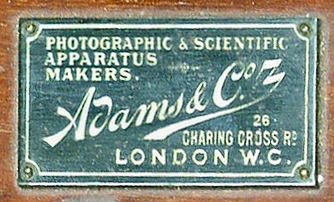
|
This late 19th, early 20th
Century magic lantern is a wonderful piece of equipment from the maker's
"
Adams and Company" of "Charing Cross
Road, London, WC". |
||
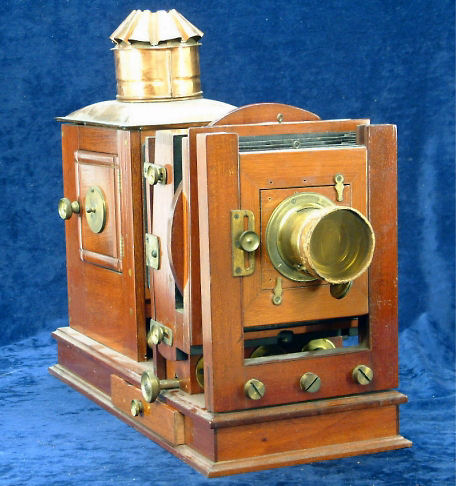 |
|||
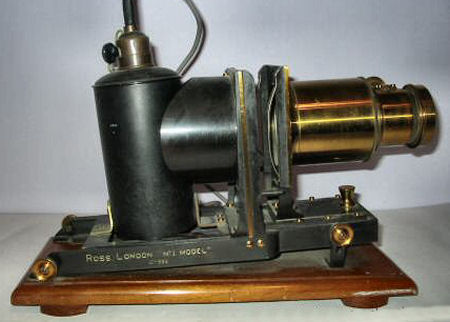 This interesting late 19C early 20C magic lantern is made by 'Ross of London' and is the 'No. 1 model No.889'. It is a beautiful example of high quality engineering. The Mahogany base board measures 16 3/4" x 6 1/2" (42.5 x 16.5 cm). The lantern is c. 11" (28 cm) tall. 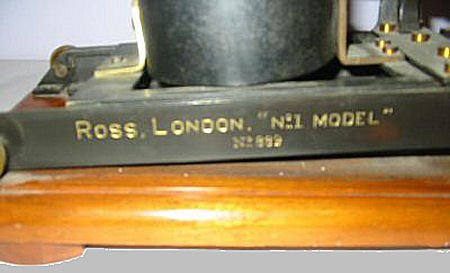 |
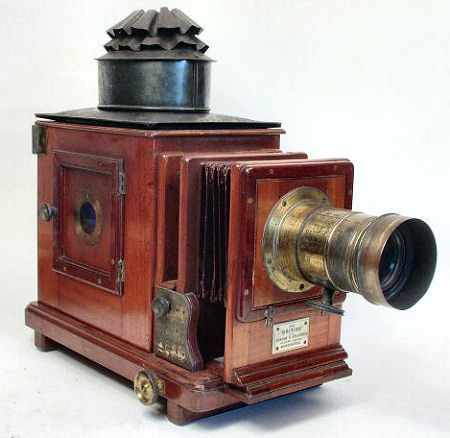 This lantern has a beautiful mahogany base, lamp house, lens plate, and back plate. It has two side opening doors with brass framed peepholes having blue glass. The inside of the doors and lamp chamber are lined with Russian iron. The lantern has a four inch condenser and double extension focusing by means of the bellows and the conventional rack and pinion. The brass objective lens tube is engraved with The "British" J.T.Chapman Manchester. The front plate carries a makers ivory plate which reads The "British" Josiah T. Chapman Albert Square Manchester. The lantern measures 54 x 22 x 44 cm tall. |
||
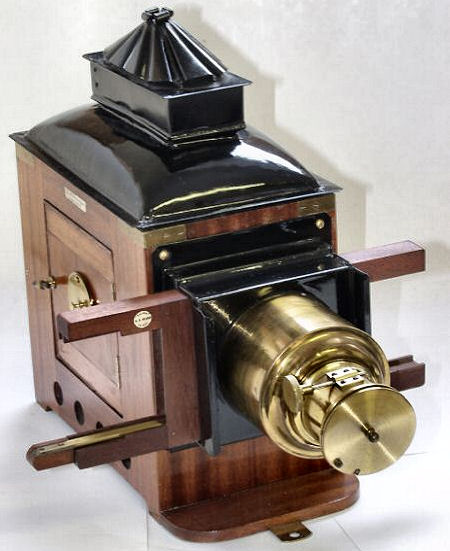 |
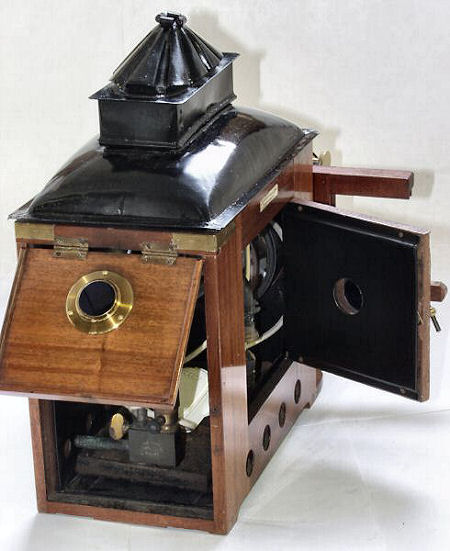 |
||
|
Brass and mahogany magic lantern made by the
Birmingham based British company J Lancaster and
Son, c. 1900. Size approx 38 cm tall, 47 cm long, and 18 cm wide. |
|||
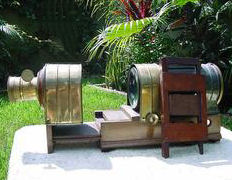
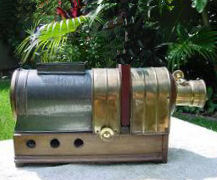 |
This English Sciopticon is
almost similar to the American Sciopticon made by L.J. Marcy (See:
Magic lanterns, Various manufacturers U.S.A. 1). It was made by the
English manufacturer and inventor of the Woodburytype slide-making
process, Walter Bentley Woodbury,
who was impressed by Marcy's Sciopticon during a visit to America and
had determined to introduce it to Britain on his return (c.1872). |
||
|
A brass label on the front reads "THE
WOODBURY IMPROVED SCIOPTICON". |
|||
| Characteristic of this
magic lantern are the double bent chimney and the large
handle at the back. A gold painted label on the side door says it was made by ABRAHAM & CO. OPTICIANS 20 LORD STREET LIVERPOOL. Abraham Abraham was an optician and instrument maker who operated from about 1817 in Liverpool, England. After a partnership with the optician Charles West in 1851 a company known as A. Abraham & Co. was formed. The lantern measures 16" tall x 13 1/2" (40.5 x 34 cm). |
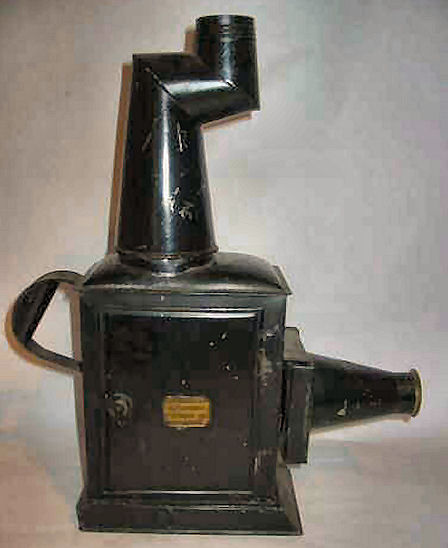 |
||
 |
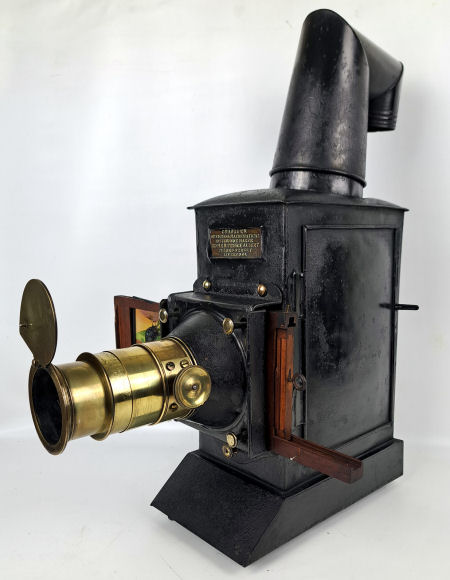 |
||
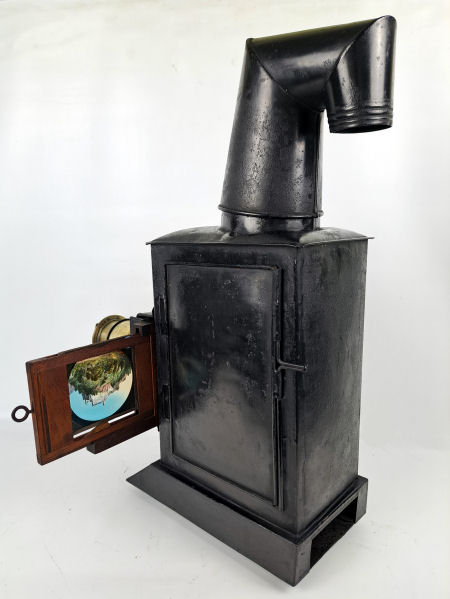 |
 |
||
|
Another magic lantern with a double-bent chimney.
On the front of the lantern is a brass plate soldered with the name and
address of the manufacturer, Chadburn, Liverpool. This company
had a branch at 71 Lord Street from 1845. This lantern was probably made around 1865. Height incl. chimney; 49 cm. Photos: Charles Barten. |
|||
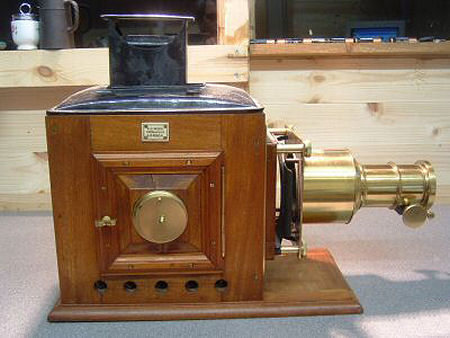 |
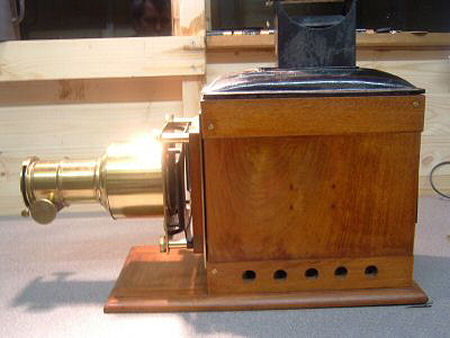 |
||
 |
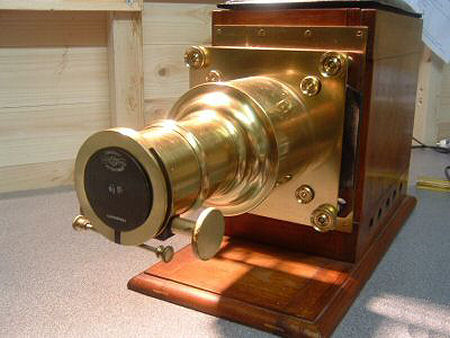 |
||
|
Mahogany and brass magic lantern, made by the English
scientific instrument maker Edward George Wood. Tin roof and chimney. The
lantern is 22" long and 16" (high 56 x 40.5 cm). At
one side a white engraved name plate with the name of the manufacturer
'E.G. Wood, 74 Cheapside, London' |
|||
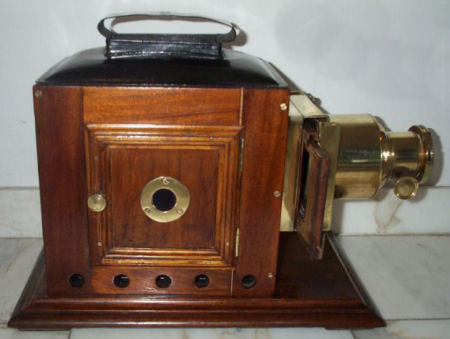 |
 |
||
 |
Charming
Victorian brass and mahogany magic lantern. Made in London by the
Griffin Company. The name of the maker is painted on the base of the
original gas burner. The lantern is approx 13" high, 18" long with a 10" wide base
(33 x 46 x 25.5 cm). |
||
 |
|||
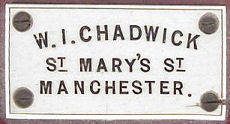 Giant
Magic Lantern,
W.I. Chadwick, Manchester. Giant
Magic Lantern,
W.I. Chadwick, Manchester.The wood body of this wonderful antique projector measures 15 x 10 x 8 inches (38 x 25,5 20.5 cm); with the bellows extended it measures about 30 inches ( 76 cm) long. The sliding nose tube extends 4 inches (10 cm) and the rack and pinion extends it a further ¾ inch (2 cm). The white nameplate is engraved: W.I. Chadwick, St.Mary’s St. Manchester. |
|||
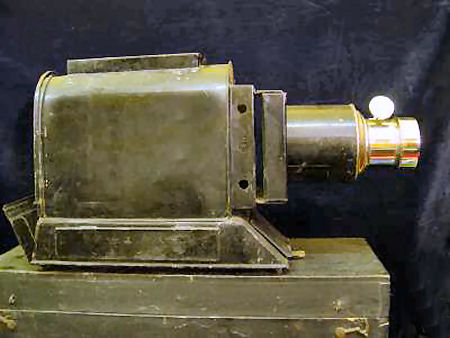 |
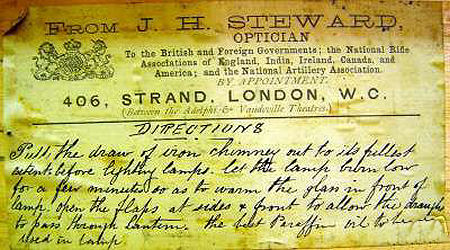 The lantern is accompanied by handwritten Directions for Use with Stewards' letterhead. |
|
Magic lantern made by the English manufacturer and
retailer of magic lanterns and scientific instruments
James Henry Steward, active from 1856
in London. |
|
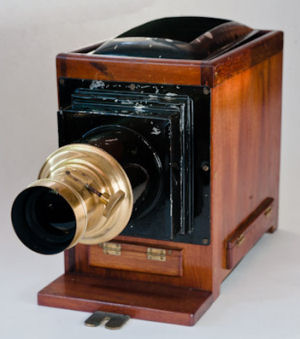 J. H. Steward, London. |
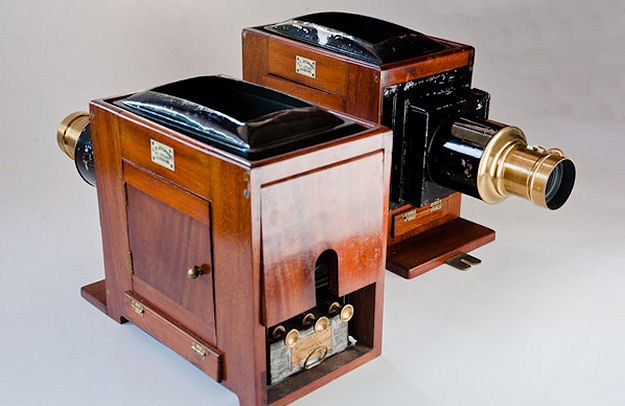 |
|
Mahogany lamphouse with label J. H. STEWARD,
406 STRAND, LONDON, two side-opening doors, three side-mounted hinged
ventilators, a three-wick patent refulgent lamp with chimney. Condensing
lens, black-painted metal lens mount and a lacquered-brass bound rack
and pinion focusing lens. |
|
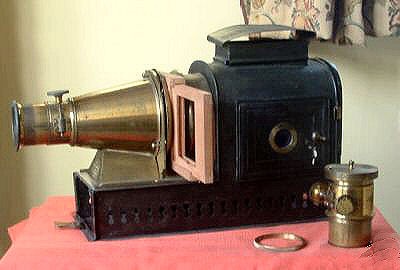 |
This Magic Lantern has a brass plate which
says 'MM the Euphaneron E.G. Wood 74 Cheapside London.' The distinctive paraffin lamp of the Euphaneron was originally issued with two wicks in the form of a 'V'. Later a further two wicks were added and the arrangement took the form of a 'W'. |
|
|
|
| |
©1997-2025 'de Luikerwaal' All rights reserved. Last update: 07-02-2025. |